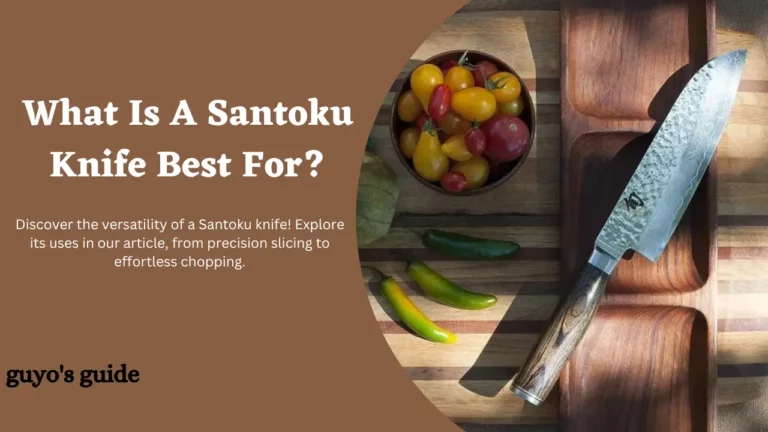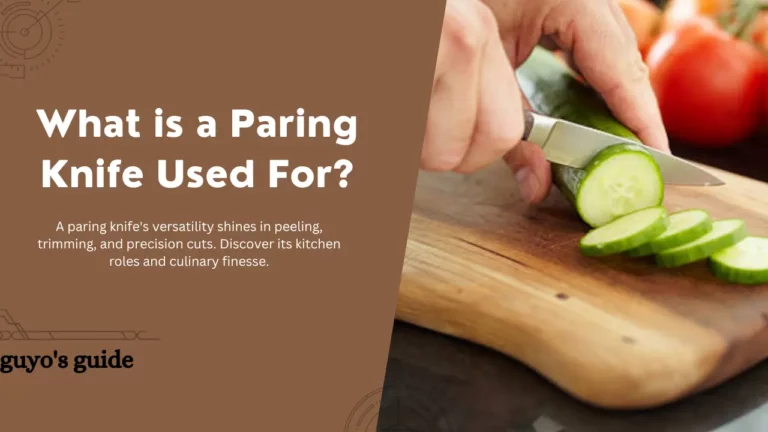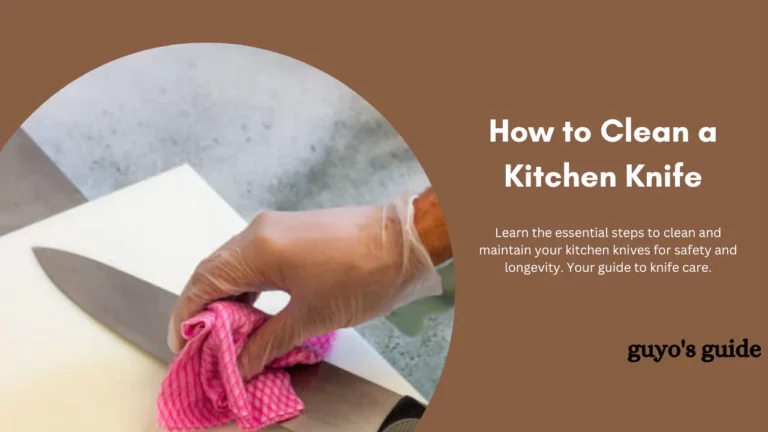Boning Knife vs. Carving Knife (Full Guide)
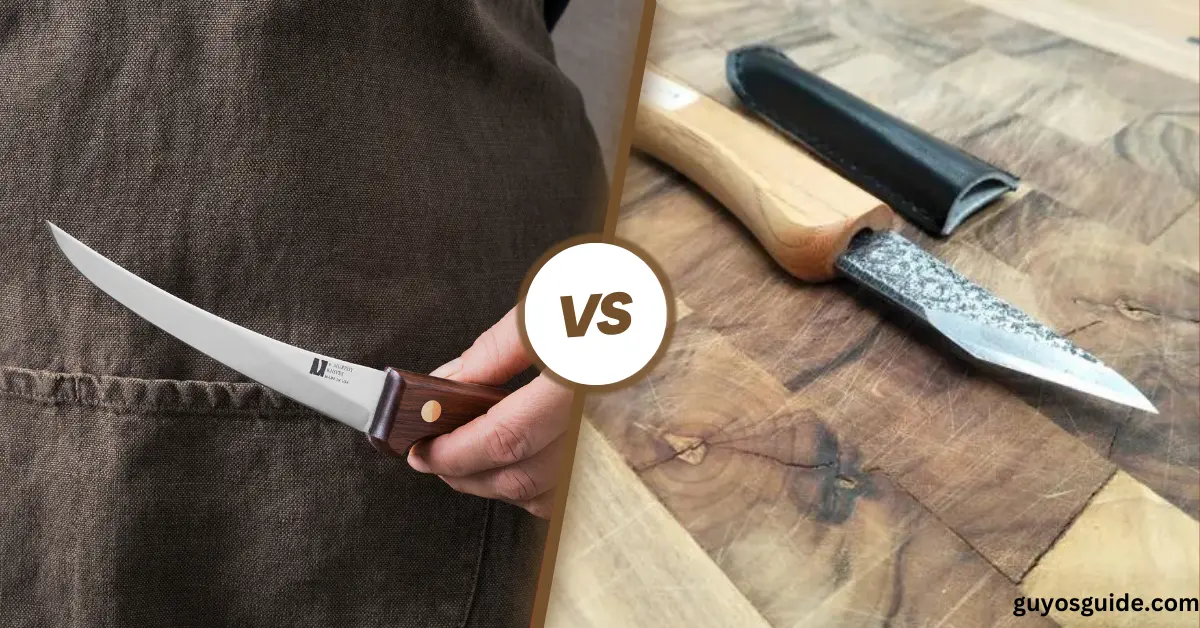
Some of the links in this post are affiliate links, meaning, at no additional cost to you, We will earn a commission if you click through and make a purchase.
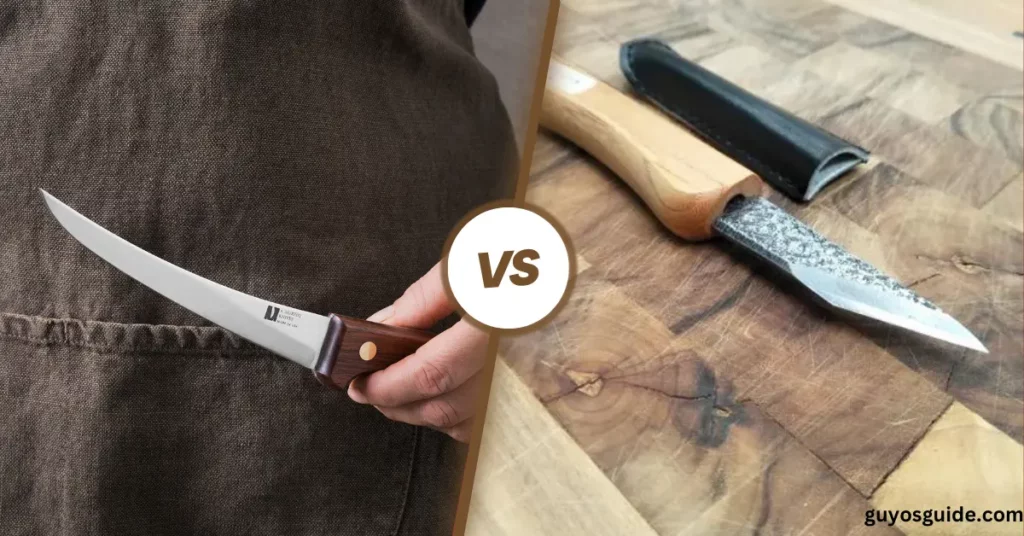
When it comes to preparing and serving meat, having the right tools can make a world of difference.
In the culinary world, two knives that often come into play are the boning knife and the carving knife.
While both are essential for specific tasks, they have distinct differences that set them apart.
In this blog post, we will explore the differences between the boning knife and the carving knife, helping you understand which one is best suited for your needs.
So, let’s dive in.
Boning Knife

A boning knife is a specialized kitchen knife designed for the precise and efficient removal of bones from meat, poultry, and fish.
Its primary purpose is to separate the meat from the bones while minimizing waste, making it an essential tool for butchers, chefs, and home cooks who regularly work with raw cuts of meat.
Boning knives are engineered to make clean and accurate cuts, ensuring minimal meat wastage.
Characteristics of a Boning Knife:
- Blade Shape: Boning knives typically have a narrow, pointed blade that is well-suited for navigating around bones and joints. This blade shape allows for precise control during the deboning process.
- Blade Flexibility: Boning knives come in different levels of flexibility, including stiff, semi-flexible, and flexible variations. The flexibility of the blade can be chosen based on the specific task, with stiffer blades being suitable for tougher cuts and more flexible blades for delicate work.
Examples of When to Use a Boning Knife:
- Deboning Meat: Boning knives are commonly used to debone cuts of meat, such as chicken breasts, pork chops, and lamb shanks. The narrow, pointed blade allows for careful separation of the meat from the bones.
- Removing Poultry Skin: When skinning poultry, a boning knife is ideal for separating the skin from the meat with precision.
- Fillet Fish: Although not as flexible as fillet knives, some boning knives are versatile enough to fillet fish, especially if they have a semi-flexible blade. They are used to remove bones and skin from fish fillets.
- Trimming Fat: Boning knives are valuable for trimming excess fat from meat or poultry, ensuring a cleaner and more desirable final product.
Carving Knife
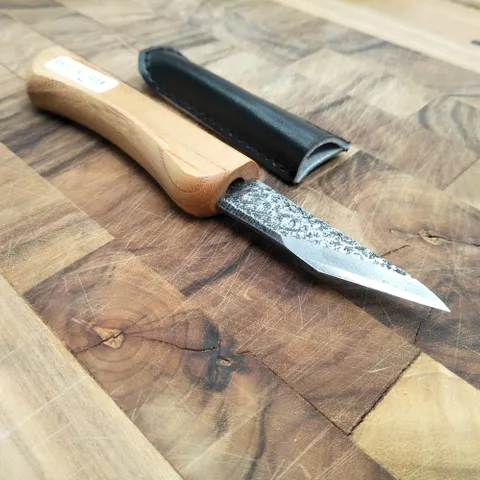
A carving knife is a specialized kitchen knife designed for the precise slicing of cooked meat, particularly roasts, poultry, and large cuts.
Its primary purpose is to create thin, uniform slices of meat, making it a valuable tool for carving and serving impressive slices at the dining table.
Carving knives are known for their sharpness, long and narrow blades, and the ability to make clean, smooth cuts.
Characteristics of a Carving Knife:
- Blade Length: Carving knives are distinguished by their long and slender blades, typically measuring 8 to 15 inches (20 to 38 cm) in length. The extended blade allows for longer slicing strokes and the creation of thin, even slices.
- Blade Thickness: Carving knife blades are relatively thin, enhancing their slicing capability. The thin blade minimizes resistance, allowing the knife to glide smoothly through cooked meat without tearing it.
Examples of When to Use a Carving Knife:
- Slicing Roasts: Carving knives are ideal for slicing roasted meats, such as beef, pork, or lamb roasts. Their long, sharp blades create beautifully even slices, perfect for presentation.
- Carving Poultry: Carving a whole turkey, chicken, or other poultry is made easier with a carving knife. The narrow blade allows for precise cuts, separating the meat from the bones with minimal effort.
- Serving Large Cuts: When serving large cuts of meat, a carving knife ensures that each slice is uniform and visually appealing, making it a suitable tool for family gatherings and special occasions.
- Cutting Ham: Carving knives are commonly used to carve ham, ensuring neat slices for sandwiches, platters, or meals.
- Slicing Smoked or Cured Meats: Whether it’s smoked salmon, cured ham, or other specialty meats, carving knives excel at producing thin, delicate slices without crushing or tearing the meat.
Comparison between Boning Knife and Carving Knife
| Aspect | Boning Knife | Carving Knife |
|---|---|---|
| Purpose | Remove bones from meat, poultry, fish | Precise slicing of cooked meats, roasts, poultry, large cuts |
| Blade Shape | Narrow, pointed, semi-flexible to stiff | Long, narrow, relatively straight, stiff |
| Blade Flexibility | Variable flexibility (stiff to flexible) | Minimal flexibility |
| Blade Length | Typically shorter (5-7 inches) | Longer (8-15 inches) |
| Recommended Uses | Deboning, removing poultry skin, filleting fish, trimming fat | Slicing roasts, carving poultry, serving large cuts, cutting smoked or cured meats |
| Precision vs. Presentation | Precision and utility | Presentation and visually appealing slices |
Which Knife Should I Choose
The choice between a boning knife and a carving knife depends on your specific culinary needs and the types of tasks you frequently perform in the kitchen. Here are some factors to consider when deciding which knife to choose:
Choose a Boning Knife If:
- You Frequently Debone Meat or Poultry: If you often work with cuts of meat, such as chicken breasts or pork chops, and need to remove bones or trim fat, a boning knife is the ideal tool. Its narrow, pointed blade and flexibility allow for precise bone removal with minimal waste.
- You Fillet Fish: Some boning knives, especially those with semi-flexible blades, can also be used for filleting fish. If you occasionally prepare fish and prefer a multi-purpose tool, a boning knife can suffice.
- You Value Precision and Control: Boning knives are all about precision and utility. They offer excellent control for tasks that require detailed work.
- You Have Limited Space: Boning knives are typically shorter and more compact, making them a good choice if you have limited storage space in your kitchen.
Choose a Carving Knife If:
- You Frequently Carve or Slice Roasts and Large Cuts: If you frequently prepare roasts, whole poultry, or large cuts of meat and you want to create visually appealing, thin slices for presentation, a carving knife is the better choice. Its long, straight blade and minimal flexibility make it ideal for this purpose.
- You Prioritize Presentation: Carving knives are designed for presentation and are perfect for serving elegant slices at the dining table. If you want your dishes to look impressive, a carving knife is essential.
- You Serve Smoked or Cured Meats: Carving knives are well-suited for cutting thin, delicate slices of smoked or cured meats without crushing or tearing.
- You Have the Storage Space: Carving knives are longer, which might require more storage space. If you have adequate storage and frequently carve large cuts, a carving knife is a valuable addition.
FAQs
What is the primary difference between a boning knife and a carving knife?
A boning knife is designed for detailed meat trimming and deboning, while a carving knife excels at slicing and serving larger cuts of meat.
Can I use a boning knife for carving or vice versa?
While it’s possible to use a boning knife for carving in a pinch, it’s not ideal. Carving knives are better suited for making precise, clean slices.
Which knife is better for preparing a roast or turkey?
A carving knife is the better choice for slicing roasted meats, as it’s long, slender, and sharp, making it easier to achieve even slices.
What are the key features of a boning knife?
Boning knives typically have narrow, flexible, or semi-flexible blades with sharp points, designed for intricate tasks like removing bones and skin.
What are the key features of a carving knife?
Carving knives have longer, straight blades with a fine edge. They are designed for slicing cooked meats, such as roasts and poultry, with precision.
Wrap Up
The choice between a boning knife and a carving knife is all about matching the right tool to the culinary task at hand.
Each knife serves a distinct purpose, with the boning knife excelling in precision and detail, while the carving knife shines in achieving elegant, uniform slices.
Whether you’re a home chef or a professional, having both in your kitchen can elevate your culinary experience, making it easier to prepare and serve meats with finesse.
Your choice ultimately depends on your culinary adventures, but rest assured, having the right knife in hand will make all the difference.

